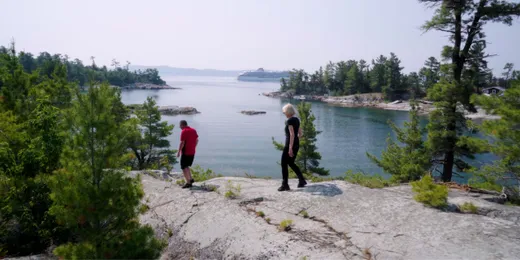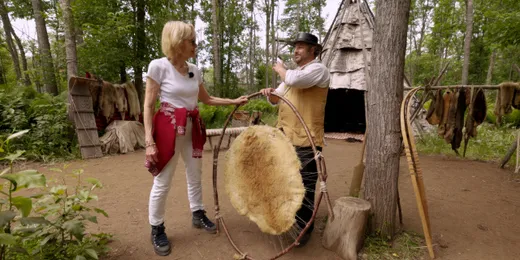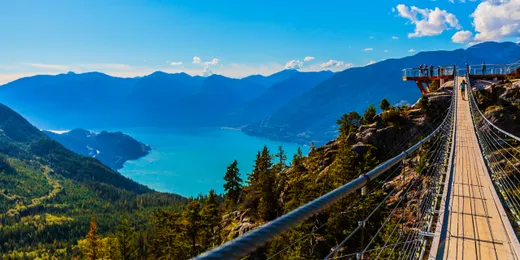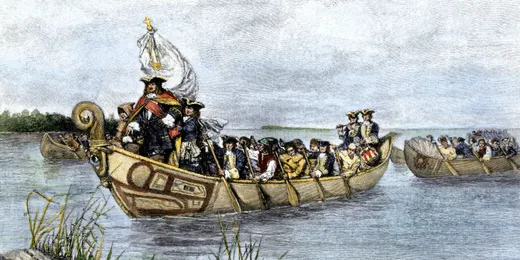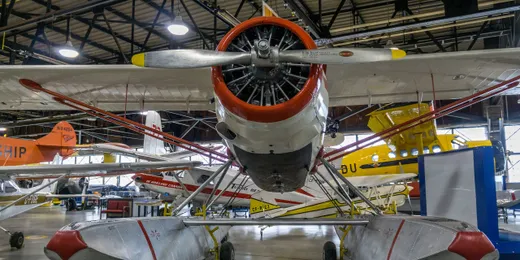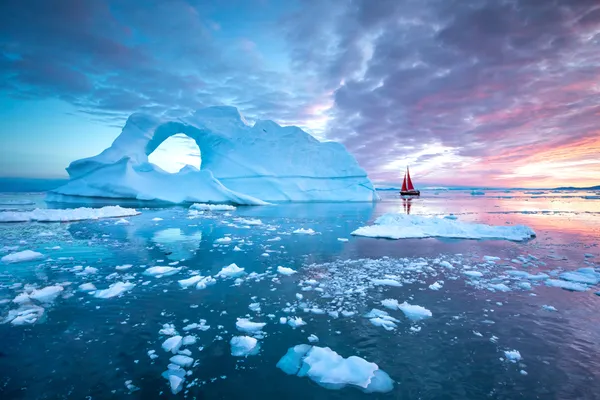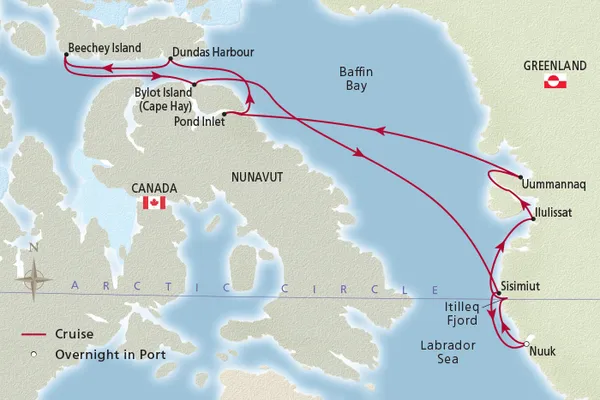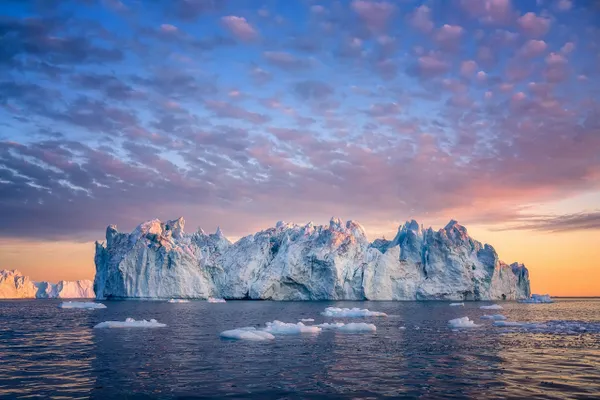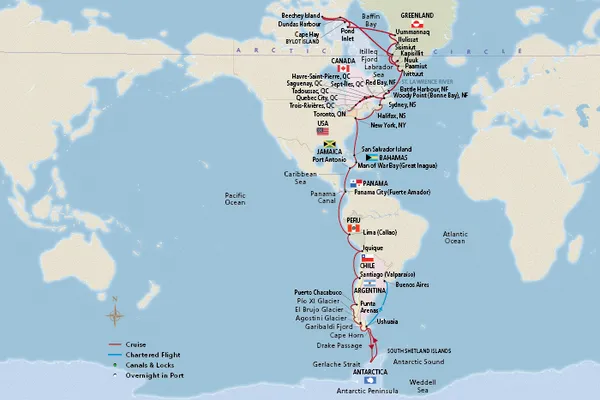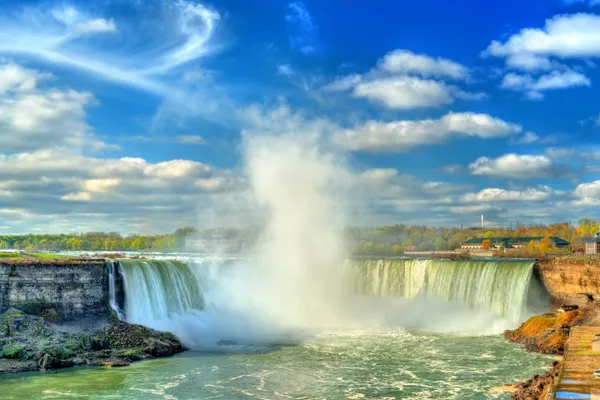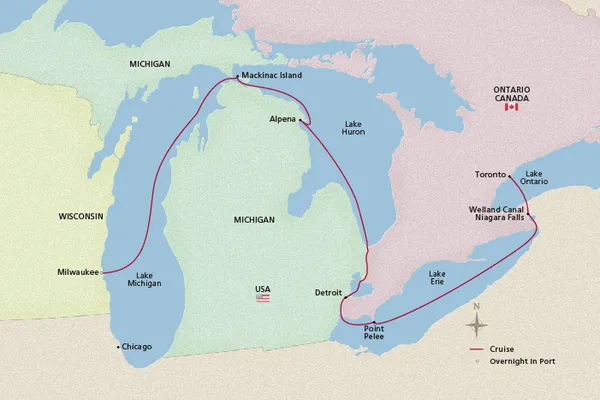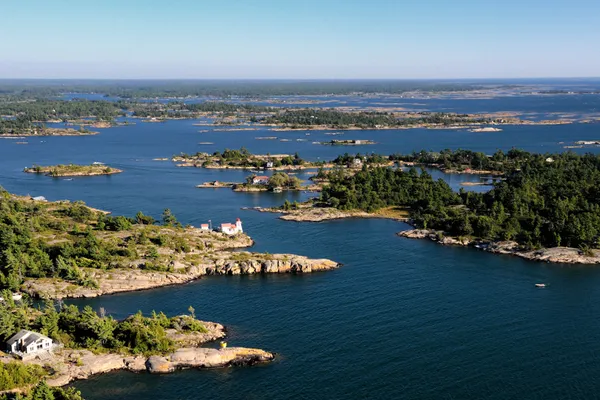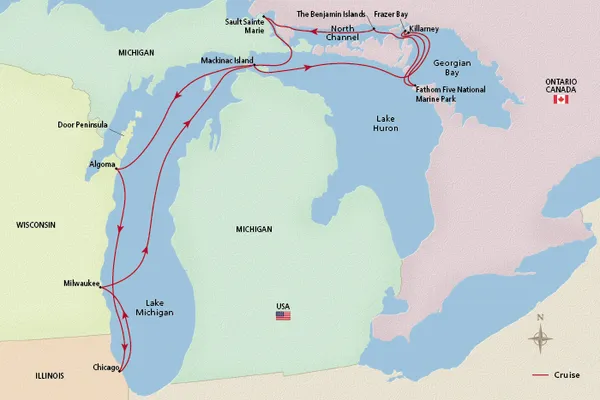
Discover Canada’s boundless treasures
Experience the vibrant cities, majestic landscapes and diverse cultural legacies of Canada. Read on to learn more about the rich history of this breathtaking country and explore the enriching experiences that await you in Ontario, Nova Scotia, Newfoundland and beyond. Enhance your knowledge of Quebec’s regional cuisine, explore First Nations traditions and uncover the storied past of an 11th-century Norse settlement.

Canada
Canada is the second-largest country in the world in terms of geographical area, occupying two-fifths of North America. Despite its immense size, it is one of the most sparsely populated countries in the world, and many Canadians pride themselves on the majesty, grandeur and breadth of their pristine landscapes. Some of Canada’s most notable natural treasures include:
- Niagara Falls—This thundering cataract located on the Niagara River forms a natural border between the United States and Canada. There are, in fact, three separate waterfalls: two that sit in the US—the American Falls and Bridal Veil Falls—and the Horseshoe Falls located in Canada.
- The Canadian Shield—The Shield is the largest expanse of exposed Pre-Cambrian rock on Earth. Its surface features an average relief of nearly 100 ft. (30 m), with some areas rising to over 4,900 ft. (1,500 m) in northern Labrador and on Baffin Island.
- Gros Morne National Park—A UNESCO World Heritage Site, this expansive park is located on the west coast of Newfoundland. Crisscrossed by hiking trails, it covers an area of almost 700 sq mi. (1,813 sq km) and features diverse scenery and ecosystems, including soaring fjords, rugged mountains, dense forests and coastal lowlands.
- The St. Lawrence River—The second-largest river in Canada and the third-largest in North America, it is one of the region’s most significant waterways. An estimated 15 animal species migrate through and along the river throughout the year, including salmon and various birds. Many rare and endangered species, such as the spotted turtle, also inhabit the river.
Much of Canada consists of arctic and subarctic territories, which experience very cold winters and short, cool summers. But overall, the country has a varied climate. Its southernmost point, Middle Island in Lake Erie, lies at the same latitude as northern California, and the Great Lakes moderate the weather in southern Ontario and Quebec, creating similar conditions to the American Midwest, with hot, humid summers and cold, snowy winters.
Although there are no written records of Canada’s First Nations peoples prior to European expansion, archaeological evidence and oral traditions reveal a rich tapestry of Indigenous cultures. The name Canada derives from the Huron-Iroquois word kanata, meaning village or settlement.
While Norse explorers reached North America during the 10th century, Europeans did not return to Canada until the late 15th century, when the Italian John Cabot explored Labrador, Newfoundland and Nova Scotia. In 1534, the explorer Jacques Cartier navigated the St. Lawrence River and began claiming territory for France. He referred to the area around present-day Quebec City as “Canada,” while the larger landmass came to be known as “New France.” After Britain won the Seven Years’ War in 1763, it took control of Canada until 1931, when Canada became a self-governing territory within the British Empire. The country gained full legislative independence in 1982, when Canada obtained the right to amend its own constitution. Today, Canada prides itself on multiculturalism and celebrates its British, Acadian and First Nations heritage.

-
Cuisine—Influences on Quebec’s culinary traditions
La cuisine Québécoise has been heavily influenced over the years by Canada’s Indigenous populations, French settlers and English immigrants. French is the province’s official language, and today Quebec’s largest industries are agriculture, fishing, dairy, mining and forestry.
Quebec’s First Nations people taught French and English settlers to tap maple trees and distill the syrup, a practice which remains an emblem of both Quebec and the country of Canada. In fact, Quebec—predominantly the Chaudière-Appalaches region—produces 70 percent of the world’s maple syrup supply and accounts for 86 percent of Canada’s production.
Other iconic Quebecois dishes—including poutine, meat pies and hearty soups—reflect the cooking techniques of the European immigrants who settled in Quebec, the region’s harsh winters, and the diverse ingredients available across this immense province. Quebec’s cuisine often leverages bountiful staples such as wild game, including venison, caribou and moose; fresh fish, including wild char and Atlantic salmon; seasonal root vegetables and apples. Most fine dining menus in Quebec are thoughtfully designed to showcase European techniques and the city’s finest local products.
-
Culture—The Indigenous Innu
The Quebec-Labrador Peninsula has been the ancestral homeland of Indigenous Innu for over 10,000 years—the earliest recorded chapter of human history in Eastern Canada. From north to south, the nomadic Innu had settlements that sprouted throughout this great region.
The northern Innu inhabited the sprawling, barren grasslands and tundra of Labrador in the Canadian sub-Arctic region. Caribou were their primary hunting game—outside of fish and small mammals—which they used both for sustenance and to keep warm. The Innu draped caribou skins over their wickiups—oval-framed huts made from wood or grass—to combat the harsh climate. Animal hide and fur were fashioned together to create the traditional clothing worn in the north. Early French colonizers named these native inhabitants Naskapi. While the origins of this word have not been confirmed, allegedly it means “uncivilized people,” based on the Innu people’s secluded way of life. In contrast, the northern Innu tribe called themselves Nenenot, meaning “true, real people” in their native tongue.
Meanwhile, the southern Innu roamed the vast forest lands near the Gulf of St. Lawrence. This group hunted moose on land and seal, salmon and eel off the shores of the nearby Labrador Sea. Like their northern counterparts, the southern Innu also constructed wickiups from birch bark. They fashioned textiles from moose and seal hide, which they then crafted into clothing, including dresses, leggings and moccasins. Early missionaries from France, who had formed a settlement in the St. Lawrence River area during the 17th century, labeled them as Montagnais, or “mountaineers” in French.
Despite the Algonquian language dialects and cultural traditions that tied these northern and southern groups together, it was not until the 20th century that the two groups united to form the Innu Nation, with “Innu” translating to “people” in Algonquian. Thousands of Innu people remain in present-day Canada, which the Innu call Ntisinan, or “our land” in Algonquian.
-
History—The first Europeans in Canada
Contrary to some accounts, most researchers and scholars agree that a Viking was the first European to set foot on North American soil. Leif Eriksson was the intrepid son of Erik the Red, the Norse explorer who discovered Greenland. Around the year 1000—almost 500 years before Christopher Columbus made his famous voyages—Eriksson was on an expedition from Greenland when he spotted land just off the coast of today’s northern Newfoundland and went ashore. He called his discovery Vinland, or “Land of Wine,” because of its dense forests and wild grapes. Today, it is known as L’Anse aux Meadows.
Today, L’Anse aux Meadows is full of open grassland, but when Eriksson and his crew settled here, forests blanketed much of the coast, surely reminding them of their native Norway. They felled trees to build boats and houses and to forge iron with fire. In the summer, produce and game were plentiful, but during the long winter months, the earth froze and the animals headed south. The harsh climate tested even their Viking resolve. With little food and freezing Arctic air, the settlers abandoned their new home. Norse sagas tell of subsequent attempts to settle the land, a story riddled with conflict both within the small Viking community and between the colonists and Canada’s Indigenous peoples.
In 1960, explorer Helge Ingstad and archaeologist Anne Stine Ingstad discovered evidence of a Norse settlement here. Their team unearthed artifacts, including a stone oil lamp, a knitting needle and a whetstone. Today, the site is an echo of the small community—by some accounts, only 160 Vikings—that attempted to take hold here. Whatever the reason for their departure, L’Anse aux Meadows provides insight into the breadth of the Viking reach, their navigational skill and their fascinating culture.
Canada Highlights
Explore culture-rich urban centers, observe the windswept pines and sandy coves of the Great Lakes region and soak up the unparalleled beauty of the Canadian Maritimes. Here are some additional highlights you may enjoy in Canada:
- Experience the power of the world-famous Niagara Falls
- Kayak the blue waters of stunning Georgian Bay
- Transit the Soo Locks between Lakes Superior and Huron
- Take in Thunder Bay’s serene coastline during a Zodiac ride
- Experience a traditional Nova Scotian lobster boil
- Gain insights into First Nations history and heritage
- Keep watch for whales in Saguenay-St. Lawrence Marine Park
- Visit Quebec City’s Old Town, a UNESCO World Heritage Site
- Peruse masterpieces at the Art Gallery of Ontario
- Explore Toronto’s vibrant neighborhoods
- Cross Vancouver’s legendary Capilano Suspension Bridge
- Sail the pristine waterways of the Inside Passage
Destination Insight Videos
-
Discover Canada’s Georgian Bay with Jean Newman Glock (29:58)
Join Viking Ambassador-at-Large Jean Newman Glock once again as she explores the scenic parks and vital waterways of the Great Lakes region. In this episode of Beyond the Brochure, Jean admires a remarkable birch bark canoe crafted by local First Nations people and learns about beekeeping In Killbear Provincial Park. Then, she journeys across the Georgian Bay and witnesses a NOAA balloon launch from the deck of one of our state-of-the-art expedition ships. She concludes her visit in the charming Okeechobee Lodge in Frazer Bay, where she enjoys stunning views of Baie Fine—the largest freshwater fjord in the world.
-
Experience the highlights of Lake Superior with Jean Newman Glock (29:26)
Join Viking Ambassador-at-Large Jean Newman Glock as she travels Beyond the Brochure and explores the scenic Great Lakes region. Follow along as she discovers the majesty of Lake Superior and uncovers the rich history of Silver Islet, a former silver mining community. Jean meets a local guide and gains insight into the crucial role the Indigenous Anishinaabe people played in helping European settlers adapt to life in Canada. Then, she visits historic Fort William and learns about traditional birch bark canoes.
-
At home in Canada with Aaron Lawton (25:16)
Enjoy another glimpse of “The Great White North” with Viking Expeditions Operations Manager Aaron Lawton, who leads us through some of his favorite places in Canada. Discover his British Colombia home in Squamish, then visit Vancouver and explore the Great Lakes, where Aaron offers us a peek into the best places to kayak and hike.
-
Brush up on Canadian history with Viking Resident Historian Knut Olav Nesse (53:19)
Take another look at the early exploration of Canada during a captivating lecture from Viking Resident Historian Knut Olav Nesse. Gain insight into the motivations and legacies of key figures in Canada’s past—from Jacques Cartier to Samuel Champlain and more. Then, learn why Knut chose to make this country his permanent home after serving as Norway’s trade commissioner to Canada.
-
Explore the Canadian Bush Plane Heritage Centre with actor and producer R.J. Downes (13:06)
Let your inspiration soar during a tour of the Canadian Bush Plane Heritage Centre, which guests can explore in person on our Great Lakes Collection itinerary. Housed in a historic hangar in Sault Sainte Marie on the north bank of the St. Marys River, the museum is home to nearly thirty airplanes, forest firefighting equipment and interactive exhibits. Follow local actor and producer R.J. Downes as he guides you through the collection and examines the importance of protection from forest fires for communities across Canada.
Canada Travel FAQ
All-Inclusive Itineraries—Canada
Choose one of our enriching, all-inclusive voyages and discover the many benefits of exploring in Viking comfort.



